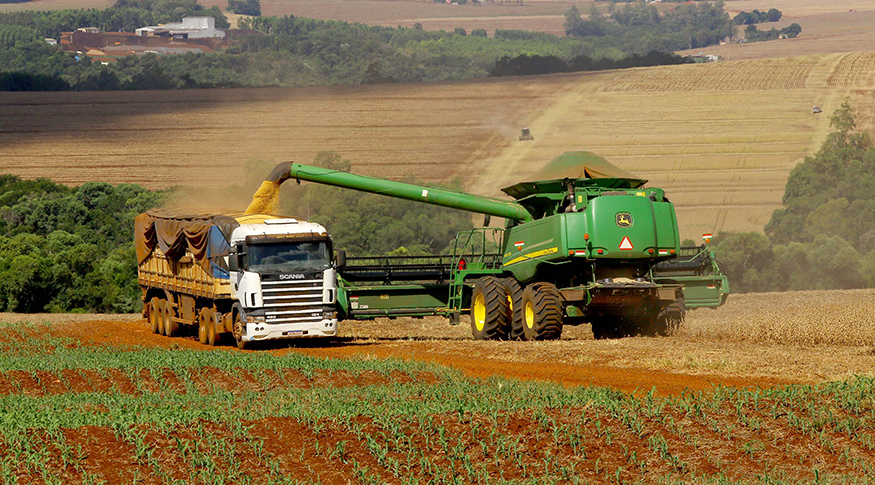Agricultural production
IBGE rises forecast of 2023 harvest to 293.6 million tonnes
December 08, 2022 09h00 AM | Last Updated: December 08, 2022 12h51 PM

The Brazilian harvest of grains, cereals and oilseeds should be 293.6 million tonnes in 2023. This is pointed out by the second forecast of the Systematic Survey of Agricultural Production (LSPA), released today (8) by the IBGE. It represents a new record in the time series started in 1975, with an increase of 11.8% in relation to the 2022 harvest, and of 1.9% in relation to the first forecast, which was 288.1 million tonnes.
According to Carlos Barradas, the manager of the survey, the increase of 5.5 million tonnes in relation to the first forecast was due to the new information coming from the new harvest, replacing part of the projections. He comments about the record.
“In 2022, the harvest of soybeans was significantly reduced due to the lack of rainfall, especially in the South Region. Concerning the 2023 harvest, the climate conditions are favorable to the development of the crops, which should allow a recovery in the output. The 2023 harvest should be a new record in the IBGE´s time series,” adds him. It is expected that the super harvest of soybeans reaches 146.4 million tonnes, a growth of 22.5% in relation to 2022.
The positive expectation is also applied to corn, whose output estimate is 115.8 million tonnes, an increase of 5.1% over the crop harvested in 2022. “Despite a good second crop in 2022, the profitability of the prices of this cereal should be maintained in 2023, encouraging corn producers to improve their crops and invest more in them.” comments Barradas.
2022 harvest should reach 262.7 million tonnes, a rise of 3.7%
The survey also disclosed the November´s estimate for the 2022 harvest, which reached 262.7 million tonnes, 3.7% above that obtained in 2021 (253.2 million tonnes), an increase of 9.4 million tonnes. It declined 110,643 tonnes (-0.0%) in relation to the previous month. The area to be harvested was of 73.2 million hectares, representing a growth of 6.8% against the area harvested in 2021, an increase of 4.7 million hectares. The area to be harvested declined 29,127 hectares (-0.0%) in relation to the previous month.
The production estimate of cereals, legumes and oilseeds recorded a positive annual change in four Major Regions: Central-West (12.2%), North (10.3%), Southeast (13.3%) and Northeast (10.3%) and a negative annual change for the South (-15.2%).
According to the survey, Mato Grosso leads the national production of grains with a share of 30.7%, followed by Paraná (12.7%), Goiás (10.4%), Rio Grande do Sul (9.8%), Mato Grosso do Sul (8.4%) and Minas Gerais (6.5%). These states together accounted for 78.5% of the national overall.
Compared with the previous month, the output estimates of potatoes - 2nd crop (4.3% or 53,076 t), sugarcane (4.1% or 24,568,533 t), beans - 2nd crop (2.8% or 37,207 t), sorghum (2.0% or 57,045 t), tomatoes (1.1% or 43,078 t), beans - 3rd crop (0.2% or 1,222 t), corn - 1st crop (0.2% or 40,443 t) and soybeans (0.1% or 78,405 t) increased, and barley (-6.7% or -35,834 t), potatoes - 3rd crop (-1.5% or -16,400 t), beans - 1st crop (-0.7% or -7,760 t), corn - 2nd crop (-0.3% or -258,965 t), potatoes - 1st crop (-0.3% or -4,892 t), wheat (-0.2% or -22,781 t) and oat (-0.0% or -280 t) decreased.
About the LSPA
Launched in November 1972 aiming at addressing the demand of users for monthly short-term statistical information, the LSPA provides estimates of planted area, harvested area, amount produced and average yield of products selected based on criteria of economic and social importance for Brazil. It not only follows up each crop investigated in the calendar year of reference, from the intention to plant up to the end of the harvest, yet also the forecast of the harvest in the coming year, for which the months of October, November and December are surveyed.




















